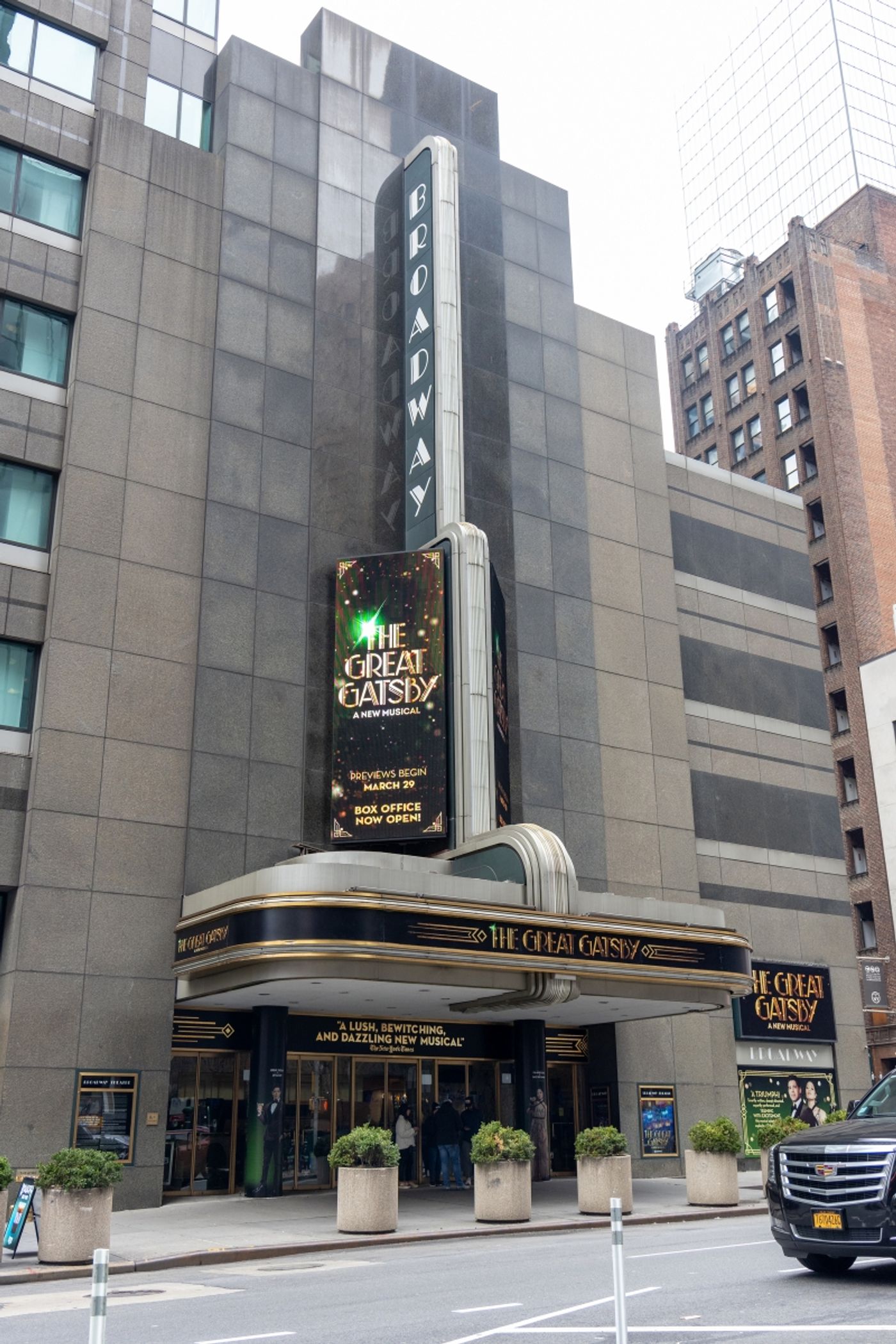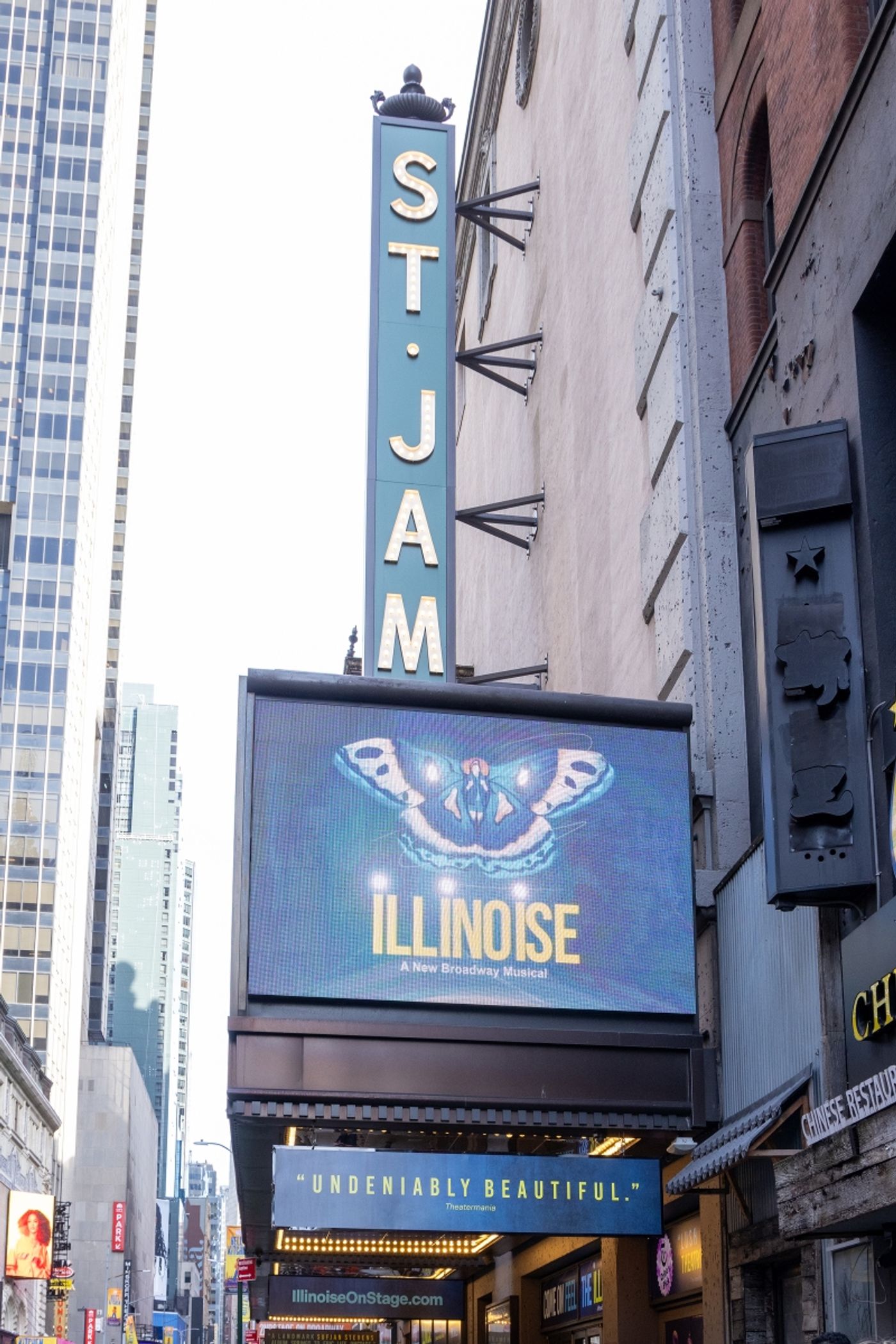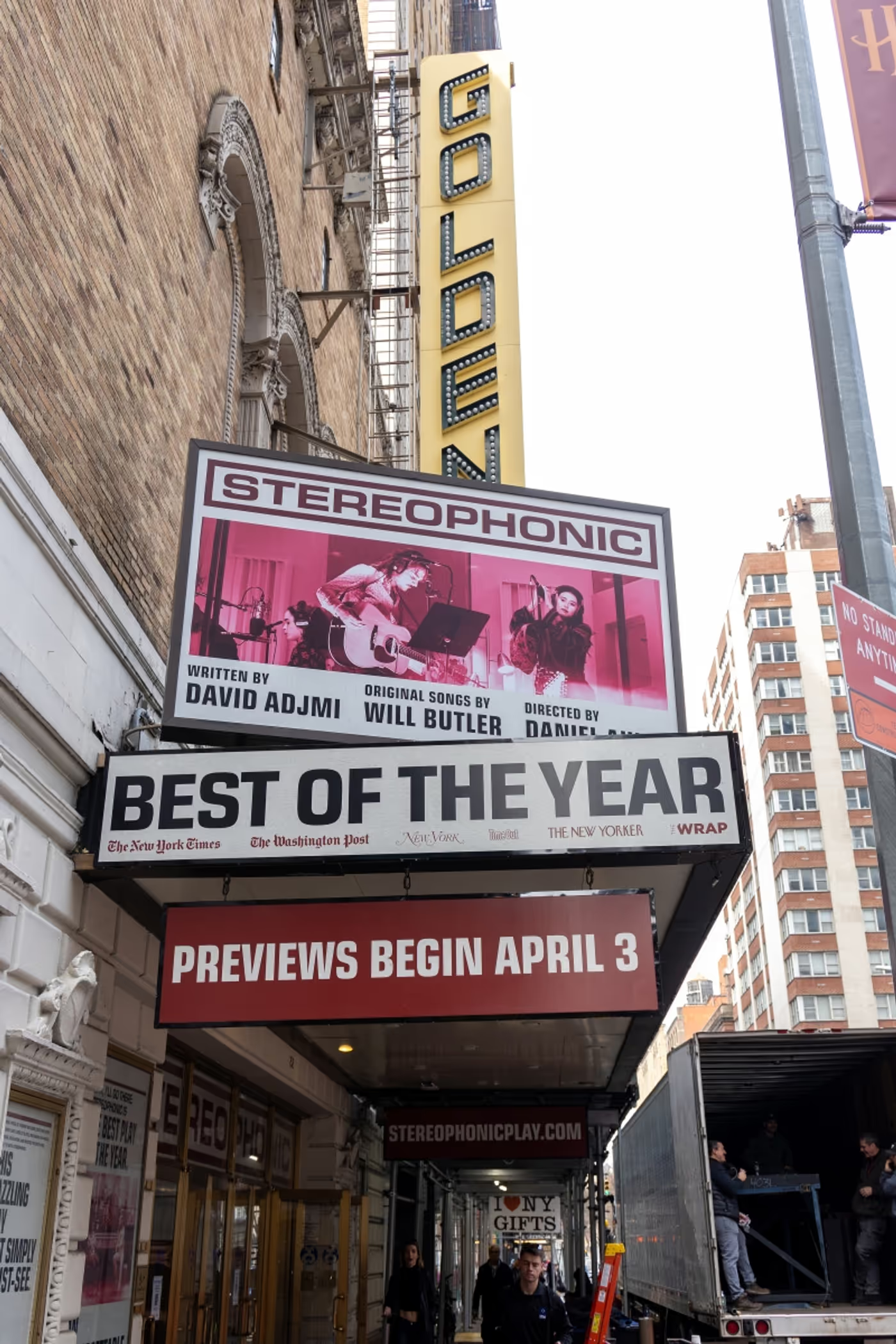Which Broadway Theaters are the Biggest/Smallest?
Broadway Theatres by Size - We've Got You Covered
Do you have a burning Broadway question? Dying to know more about an obscure Broadway fact? Broadway historian and self-proclaimed theatre nerd Jennifer Ashley Tepper is here to help with her new series, Broadway Deep Dive. Every month, BroadwayWorld will be accepting questions from theatre fans like you. If you're lucky, your question might be selected as the topic of her next column!
Submit your Broadway question in the comments here!
This time, the reader question was: Which Broadway theaters are the largest and which are the smallest?
This is a question I love, since I’ve explored the Broadway theaters themselves so much for my book series, The Untold Stories of Broadway!
The five largest Broadway theaters by capacity are currently the Gershwin (1933 seats), the Broadway (1761 seats), the New Amsterdam (1747 seats), the Minskoff (1710 seats), and the St. James (1709 seats).
The five smallest Broadway theaters by capacity are currently the Hayes (597 seats), the Friedman (650 seats), the Todd Haimes (740 seats), the Booth (766 seats), and the Golden (805 seats).
Theater capacities can change slightly from show to show, depending on various production needs. The number of seats in a theater also changes over the years as various renovations are made, meaning that the number of seats a Broadway house opened with is almost never the same amount it has today. For example, the Hayes Theatre, which opened as the Little Theatre in 1912, originally contained 299 seats. The second level of the theater, which significantly expanded the capacity, was installed later on; the house currently has 597 seats. And on the larger side, the Lyric is often one of our biggest theaters by capacity, but its current set up for Harry Potter and the Cursed Child means that it does not make the current top five list. The Palace had a capacity of 1743 before closing for major renovation in 2018, but currently only has 1648 seats, knocking it off the list.
 The Gershwin, which opened as the Uris Theatre in 1972, is the largest theater on Broadway. The majority of the few Broadway houses built in the last three decades of the 20th century (the Gershwin, Minskoff, Marquis, and Lyric) were erected at large sizes, since this would ostensibly provide more revenue for shows and for landlords—and the more successful shows at this point seemed to be getting larger. For many years, the Gershwin’s capacity of 1933 made it a difficult theater to find a financially successful tenant for. Of course there were many glorious shows at the Gershwin, but until Wicked, none were a big hit. A big part of Wicked’s success can be attributed to the creative way that the show uses the cavernous space at the Gershwin, which is partially to the credit of scenic designer Eugene Lee, who had previously designed the original Sweeney Todd in the space.
The Gershwin, which opened as the Uris Theatre in 1972, is the largest theater on Broadway. The majority of the few Broadway houses built in the last three decades of the 20th century (the Gershwin, Minskoff, Marquis, and Lyric) were erected at large sizes, since this would ostensibly provide more revenue for shows and for landlords—and the more successful shows at this point seemed to be getting larger. For many years, the Gershwin’s capacity of 1933 made it a difficult theater to find a financially successful tenant for. Of course there were many glorious shows at the Gershwin, but until Wicked, none were a big hit. A big part of Wicked’s success can be attributed to the creative way that the show uses the cavernous space at the Gershwin, which is partially to the credit of scenic designer Eugene Lee, who had previously designed the original Sweeney Todd in the space.
The Broadway, currently home of The Great Gatsby, was built in 1924, and unlike the majority of our Broadway houses, it did not originally open as a legit venue for theater. Originally a movie theater, the Broadway has since been a great home for some of our most spectacular hit mega-musicals, including Les Misérables and Miss Saigon, as well as a large immersive playground for shows like the recent Here Lies Love and the groundbreaking 1974 Candide revival.
The New Amsterdam, currently our third largest Broadway house and home to Aladdin, was brought back to life by Disney in 1997 after many years of utter disrepair. The glorious theater, once home to The Ziegfeld Follies, presented its last legit production in 1937 and then spent 60 years as a movie house—eventually a dangerous and utterly dilapidated one—before Disney undertook a historic renovation and reopened the New Amsterdam with The Lion King. The third largest theater on Broadway is often home to special theatre events, including those presented by Broadway Cares/ Equity Fights AIDS. It is a good fit for these both because of its large capacity and because its status as the home of a long-running musical provides helpful logistics for programming a special event on a night off from the current production.
The Minskoff, which was built in 1973 as part of the One Astor Plaza office building, is currently home of The Lion King. With a capacity of 1710 seats and a long-running tenant, it, like the New Amsterdam, is often host to one-night special events on Broadway.
 The St. James is technically one seat smaller than the Minskoff at the moment. Unlike the other four largest Broadway theaters, the St. James has been a continually operating Broadway house for many decades, since 1927. Also unlike the others, it has been home to a plethora of hit shows over the years, including Oklahoma!, Hello, Dolly!, and The Producers.
The St. James is technically one seat smaller than the Minskoff at the moment. Unlike the other four largest Broadway theaters, the St. James has been a continually operating Broadway house for many decades, since 1927. Also unlike the others, it has been home to a plethora of hit shows over the years, including Oklahoma!, Hello, Dolly!, and The Producers.
Our smallest house by capacity is the Hayes. On 44th Street, the Hayes has been owned and operated by Second Stage Theater since 2018. At 597 seats, the theater provides an intimate home for new plays; The Cottage, Appropriate, and Mother Play all made their Broadway premieres on its stage this past season.
Broadway’s second-smallest house is also owned and operated by a non-profit theater company; Manhattan Theatre Club has presented shows at the Friedman Theatre since 2003. Like the Hayes, the Friedman mostly has productions that are part of its non-profit season, but there is also the occasional rental production. The Friedman opened as the Biltmore in 1925 and was home to iconic shows including the original productions of Barefoot in the Park (1963) and Hair (1968) before falling into disuse in 1987. The theater was in disrepair for many years before MTC brought it back to life and renovated the now 650-seat house.
Recently renamed, Broadway’s third-smallest house is also owned and operated by a non-profit theater company! The Todd Haimes Theatre, formerly the American Airlines, originally opened as the Selwyn in 1918. The theater ceased legit operation in 1934 and began showing movies (other than a brief return to live entertainment in 1949-1950). In 2000, it reopened as part of the New 42nd Street redevelopment initiative, and began to host Roundabout Theatre company productions. Earlier this year, the theater was renamed in honor of Roundabout’s late artistic director, Todd Haimes.
The Booth is the fourth smallest theater on Broadway and the smallest that is open year-round to commercial productions. One of the most coveted spaces on Broadway due to its size and also its location, the Booth is in-demand for both plays and small musicals, most recently the Tony Award-winning Best Musical, Kimberly Akimbo.
 Coming in fifth in the Smallest House on Broadway contest is the Golden, with roughly 40 more seats than the Booth, down the block on 45th Street. Our most recent Best Play Tony winner, Stereophonic, is currently playing to sold out crowds at the Golden.
Coming in fifth in the Smallest House on Broadway contest is the Golden, with roughly 40 more seats than the Booth, down the block on 45th Street. Our most recent Best Play Tony winner, Stereophonic, is currently playing to sold out crowds at the Golden.
The most recent brand new theaters that Broadway has gained have been the Gershwin, Minskoff, Lyric (created by combining two existing houses), Marquis, and Circle in the Square, all erected since the early 1970s. With the exception of Circle in the Square, these are some of Broadway’s largest houses, with capacities of over 1600.
In contrast, the most recent theaters that Broadway has lost, which have been demolished or put into disuse since the early 1980s, have been the Latin Quarter (capacity: 499), Mark Hellinger (1505), Criterion Center Stage Right (499), Edison (499), Morosco (955), old Helen Hayes (895), and Bijou (600). These seven theaters were all hosting Broadway shows until they were lost to Broadway between 1982 and 1999. With the exception of the Hellinger (now the Times Square Church), all of these theaters we lost had capacities lower than 1000, and several as low as 499. Several years ago, I gave a TEDx Broadway talk about real estate and art, including how the removal of these smaller houses from the Broadway ecosystem affects the theatre that is produced.
Whether you’re seeing a show in one of Broadway’s largest theaters, smallest theaters, or at a house somewhere in between, we’re very lucky to have the 41 Broadway theaters that are currently in use! We’re also lucky that due to the landmarking of Broadway houses, largely that which has happened since the early 1980s, we’re unlikely to lose any other theaters any time soon.
Comments
Videos

